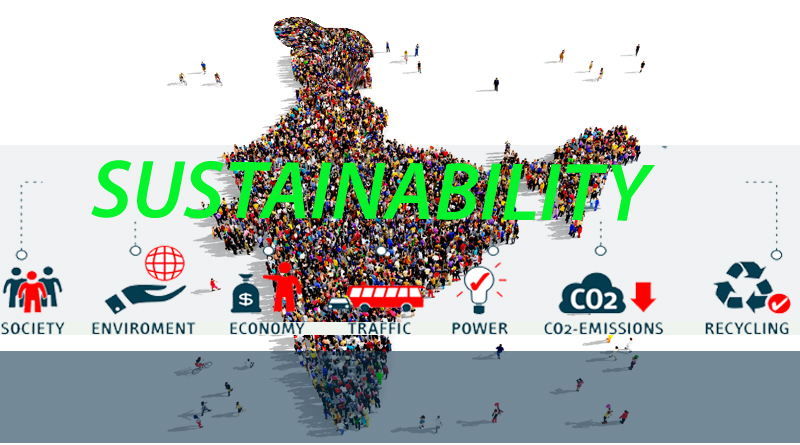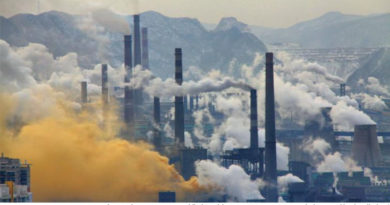5 Ways India’s Climate Goals Path Differs From Developed World
With report after report predicting the need to take urgent, even extreme steps to combat climate change, it is interesting to see how India is going about its own commitments. As always, the route is unique, a little convoluted and guarantees a dependence on a crisis or two to move faster.

With some of the richest countries in the world, from the US to Germany to Australia, increasingly looking like they will be behind on their climate commitments for 2020 based on the Paris accord, the pressure for change in many regions has shifted comprehensively from governments to civil society. Especially as extreme weather events become more apparent as an outcome of climate change.
That explains the phenomenon that is Greta Thunberg, or the increasingly visible role of United Nations agencies, as the world looks to a ‘neutral’ third party to speak truth to power.
For India, which has its own set of goals, its low per capital impact continues to provide the umbrella of more time to meet stretch targets. In fact, even in 2017, if you consider per capita impact, India was by far the lowest contributor among all major economies.
India: 1.83 MT carbon dioxide (CO2)
China: 7.72 MT in China
The EU: 6.97 MT
The US: 15.74 MT
India’s key Paris pledge is to reduce the emission intensity of its gross domestic product (GHG emissions per unit GDP) by 33-35 per cent over 2005 levels by 2030. That’s a goal considered achievable by an increasingly larger section of experts, as the country makes the slow transition to permanent changes. However, in many ways, we continue to follow a path completely at odds with other countries, and you have to wonder sometimes if we couldn’t do more. Especially as the Paris accord pathways will no longer be enough to limit warming by 2 degrees. So just how are we doing it differently? Here are just 5 examples.
1. Coal Use in Energy: Thanks to its legacy thermal sector, massive coal reserves, and lack of other options, India’s electricity roadmap continues to be dependent or reliant on coal right up to 2040 and beyond. That’s a period by which almost all of Europe, and North America, might be free of coal-powered energy.
In fact, the consensus view on global coal consumption growth between now and 2040 is for zero to negative growth. Which means that almost all the actual growth will be powered by China and India till 2030, and from 2030, possibly India alone, as India hits peak production of a billion tonnes of mined coal by then. By 2040, coal’s share at 48%, while much lower than 56% today, will still be much higher than any other energy source.
This has major implications not only in terms of the environmental impact locally but also in terms of the relevance of related targets like say converting a significant part of its transportation network to electric. If most of this electricity is still coal-powered, the whole shift itself might be questionable for its actual versus potential impact. Keep in mind that high costs, one of the biggest challenges to make the energy transition faster, is actually becoming a lesser factor with each year, even as coal energy costs remain very sticky from here on.
2. Related to coal and other fossil fuels is India’s plans for gas. Readers might be aware of the interest among middle east producers and others to pick up a stake in the India story. When it comes to petroleum refinery’s, Saudi Aramco’s $15 billion investment in Reliance’s Refinery business, and another $30 billion to come in possibly from Saudi Aramco and ADNOC (Abu Dhabi National Oil Company) in the planned $60 billion West Coast refinery are just two big markers.
Almost $60 billion is under investment for a national gas grid by 2024, which is a key part of the government plan to cut down dependence on liquid fuels for energy with cheaper and less polluting gas. This comes at a time when cities in colder climes are increasingly looking beyond gas to meet their energy needs, particularly for winter heating.
Some, like Brookline in Massachusetts, have even passed laws to prevent oil and gas pipelines in future housing starts. It’s a trend that is fast catching on and offers one of the many ways in which cities are taking on the challenge of doing their bit for climate change.
3. Energy Financing: This is where the difference between India and the rest of the world becomes really interesting. In possibly the most globalised world of financing. Thus, even as institution after institution in the developed world commits to a pause on funding fossil fuel projects, India’s domestic compulsions and lack of alternatives ensure that no such moves are being even contemplated as yet. So while we might yet see institutions dedicated to renewables financing, staying away from fossil fuel projects is still considered an imprudent move here, and for some time to come.
In fact, the government, and government-backed banks remain the biggest backers of fossil fuel projects, making you wonder how well they will be placed of the tide against fossil fuels turns faster than expected here too, due to technology disruptions. As we have already seen in the power sector, money stuck with thermal projects is one of the big reasons for slower shifts to renewable energy, and the country seems to be committed to the same old mistakes by giving long term funding to fossil fuel projects.
4. While on commitments and leaders, it is very important to note that almost all of India’s major steps are either government-led, backed or require government support in some form. And when we say government, it is mostly the central government. State governments in India remain tied into other issues that matter to them, besides a perennial lack of funding for strong climate mitigation measures.
Leaving the job almost completely with the central government, which has its own compulsions of looking for one size fits all solutions, disconnect with local activists and situations, and more. The absence of youth involvement, or even broader public involvement and demands when it comes to fighting harder, have been blamed on awareness levels and even they struggle to survive.
But either way, it is not a great sign when citizens leave it all to the government to take the big decisions, at a time when climate issues are not even a major part of poll manifesto’s, plus the lingering fear that critical policy initiatives can be easily hijacked bu vested interests. Including the government’s own, as we have repeatedly seen with thermal power, mining and transport, for instance. The country has one of the worst public transport networks even as we write, especially at the critical, last mile, local level.
5. Another missing link in India is the lack of city-led initiatives for climate change. With almost 500 million Indians expected to be living in cities by 2030, it is an acknowledged fact that owing to their dense populations and usage of resources, big cities worldwide offer a great way to really tackle issues of energy usage, emissions and more. But in India, thanks to a disproportionately high share of agrarian lawmakers, cities have been slow to respond.
A city-state like New Delhi might have grabbed headlines with its local movements and initiatives, but that has only served to be the exception. Other cities like Bengaluru and Chennai are waking up to the need to take unilateral steps for their water needs for instance, but wider moves towards say, sustainable housing, sourcing green power, a massive shift to public transport networks, or penalising or even closing polluting industries seems well beyond the ambit of our emasculated city representatives for now. Cities also offer the best possible hope for really large civil movements do more, as we have seen so far.




